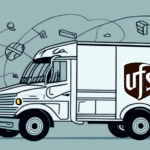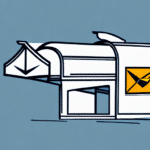Understanding the UPS Non-Machinable Surcharge
Shipping fees can significantly impact the overall cost of sending packages, especially for businesses that ship frequently. One charge that often surprises shippers is the UPS Non-Machinable Surcharge. This article delves into what the Non-Machinable Surcharge is, why UPS imposes it, and its effects on your shipping expenses. Additionally, we offer strategies to avoid this fee and guidance on how to negotiate or appeal it if necessary.
What is the UPS Non-Machinable Surcharge?
The Non-Machinable Surcharge is an extra fee that UPS applies to packages that don't comply with specific criteria for automated processing. This surcharge is triggered when a package is:
- Too large: Exceeds UPS's size limits.
- Too heavy: Weighs more than the maximum allowed weight.
- Irregularly shaped: Has dimensions or features that disrupt automated sorting equipment.
For instance, as of 2023, the surcharge adds approximately $24.00 to domestic shipments and $31.50 to international shipments. Ensuring your packages meet UPS's guidelines can help you avoid these additional costs.
Why Does UPS Charge a Non-Machinable Surcharge?
UPS implements the Non-Machinable Surcharge to cover the increased costs associated with manually handling and sorting packages. Non-machinable packages require:
- Additional labor for manual sorting.
- More space on delivery trucks.
- Extra care to prevent disruptions in the automated processing system.
This surcharge helps UPS maintain operational efficiency and manage the higher expenses incurred from handling packages that bypass automated systems.
UPS Package Requirements to Avoid the Surcharge
Size and Weight Limits
To prevent incurring the Non-Machinable Surcharge, ensure your packages adhere to UPS's size and weight restrictions:
- Weight: Packages should weigh less than 150 pounds.
- Dimensions: The combined length and girth must not exceed 165 inches. (Length + 2 x Width + 2 x Height)
Using the UPS Rate Calculator can help you verify if your package meets these criteria.
Packaging Guidelines
Proper packaging is crucial for automated processing. Follow these tips:
- Use rectangular boxes to facilitate smooth handling.
- Avoid using irregularly shaped containers like tubes or cylinders.
- Ensure even weight distribution within the package.
- Use appropriate packaging materials to protect contents without adding unnecessary bulk.
For detailed packaging guidelines, refer to the UPS Packaging Requirements.
Impact of the Non-Machinable Surcharge on Shipping Costs
The Non-Machinable Surcharge can substantially affect your shipping expenses. Here's how:
- For domestic shipments, the surcharge is typically $24.00 per package.
- International shipments can incur a surcharge of $31.50 per package.
These additional fees can add up quickly, especially for businesses shipping multiple packages regularly. When calculating shipping costs, it's essential to factor in these surcharges to avoid unexpected expenses.
Moreover, fluctuating surcharge rates, which UPS may adjust periodically, necessitate staying informed about the latest fees. Regularly reviewing UPS's pricing updates can help you budget accurately.
Resource:
For the most current surcharge rates, visit the UPS Non-Machinable Surcharge page.
Strategies to Avoid the Non-Machinable Surcharge
Optimize Package Size and Weight
Ensure your packages comply with UPS's size and weight guidelines. Consider:
- Using smaller boxes.
- Distributing weight evenly.
- Removing unnecessary packing materials to reduce overall dimensions.
Utilize UPS Shipping Tools
UPS offers various tools to help you manage your shipments effectively:
- UPS Shipping Tools: Includes calculators and guidelines to ensure compliance.
- UPS Rating and Billing Services: Help optimize shipping costs based on your package profiles.
Proper Packaging Techniques
Adopt packaging practices that facilitate automated processing:
- Use uniform packing materials to maintain consistent shapes.
- Avoid packaging items with irregular shapes or protrusions.
- Label packages clearly and avoid excessive cushioning that increases size.
Alternative Shipping Methods
If avoiding the surcharge isn't feasible, consider alternative shipping options:
- Choose a different service level that accommodates larger or irregular packages.
- Use alternative carriers that may have different surcharge policies.
Comparing UPS's Surcharge with Other Carriers
Understanding how UPS's Non-Machinable Surcharge compares with other carriers can help you make informed shipping decisions:
FedEx
FedEx imposes a similar surcharge known as the FedEx Non-Standard Package Service Charge, which applies to oversized or irregular packages.
DHL
DHL's equivalent fee is the DHL Non-Regular Size Surcharge, affecting packages that don't conform to standard dimensions.
While the surcharge amounts vary among carriers, the underlying reason remains the same: to cover the costs associated with handling packages that bypass automated systems. Assessing these fees across carriers can guide you in selecting the most cost-effective shipping option.
Handling and Appealing Non-Machinable Surcharges
Review Shipping Practices
Before appealing a surcharge, ensure that your shipping practices align with UPS's requirements. Mistakes in packaging can lead to unnecessary fees.
Contacting UPS for Appeal
If you believe a surcharge was applied in error, you can appeal by:
- Gathering documentation: Include package dimensions, weight, and packaging materials.
- Contacting UPS Customer Service: Explain your case and provide necessary documentation.
While not all appeals are successful, presenting a well-documented case can increase the chances of a waiver.
Negotiating with UPS
For businesses with high shipping volumes, negotiating terms with UPS may lead to reduced or waived surcharges. Consult with a UPS representative to explore available options tailored to your shipping needs.
Future Trends and FAQs
The Future of the Non-Machinable Surcharge
As automation technology advances, carriers like UPS may refine their package handling processes, potentially reducing the need for surcharges. However, as long as packages vary in shape and size, the Non-Machinable Surcharge is likely to persist.
Frequently Asked Questions
Q: What is considered a non-machinable package?
A: Non-machinable packages are those that exceed UPS's size or weight limits or have irregular shapes that disrupt automated processing.
Q: How much is the Non-Machinable Surcharge?
A: As of 2023, the surcharge is $24.00 per package for domestic shipments and $31.50 for international shipments.
Q: Can I dispute a Non-Machinable Surcharge?
A: Yes, shippers can contact UPS to appeal the surcharge if they believe it was applied incorrectly.
Conclusion
The UPS Non-Machinable Surcharge is an important consideration for anyone involved in shipping packages. By understanding what triggers this fee and implementing strategies to comply with UPS's guidelines, you can manage and potentially reduce your shipping costs. Staying informed about UPS's policies and utilizing available shipping tools will help ensure your packages are processed efficiently and cost-effectively.




















